“What’s up succa?” Pot 3″
$12.99This white glazed ceramic pot features the catchy phrase, “What’s up succa?”, that is sure to make your guest laugh out loud. This pot will pair perfectly with any houseplant 3″ and under.
Showing 17–32 of 252 results
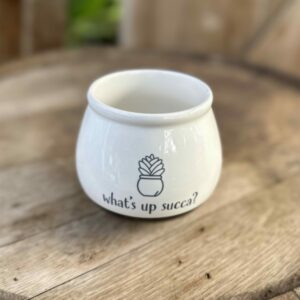
This white glazed ceramic pot features the catchy phrase, “What’s up succa?”, that is sure to make your guest laugh out loud. This pot will pair perfectly with any houseplant 3″ and under.
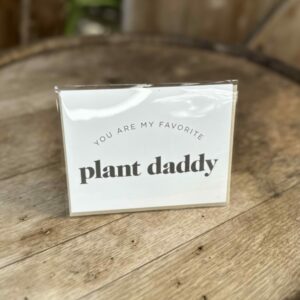
Looking for a way to express your appreciation and admiration for the plant-loving man in your life? Our “You are my favorite plant daddy” greeting card is the perfect way to do just that!
Featuring a playful and stylish design with an illustration of a potted plant, this card is the ideal expression of your love and admiration for the plant daddy in your life. The card is made with high-quality cardstock and comes with a matching envelope, making it easy to send to your favorite plant enthusiast.
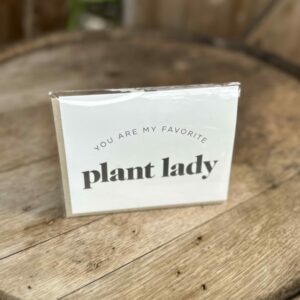
Looking for a unique and heartfelt way to let the plant lady in your life know how much she means to you? Our “You are my favorite plant lady” greeting card is just the thing!
Featuring a beautiful illustration of a potted plant with a heart-shaped leaf, this card is the perfect expression of love and admiration for the plant enthusiast in your life. The design is both elegant and playful, making it suitable for a variety of occasions – from Valentine’s Day and anniversaries to birthdays and just because.
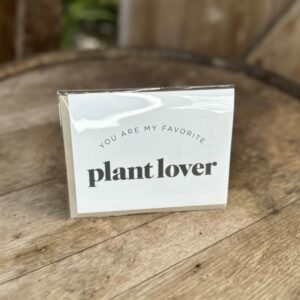
Looking for a versatile and thoughtful way to express your appreciation for the plant lover in your life? Our “You are my favorite plant lover” greeting card is the perfect choice!
Featuring a charming and playful design with an illustration of a variety of potted plants, this card is suitable for any occasion. The message “You are my favorite plant lover” is both heartfelt and lighthearted, making it suitable for anyone who loves plants.
The card is made with high-quality cardstock and comes with a matching envelope, so you can easily send it to your loved one near or far. The inside of the card is blank, allowing you to write your own personalized message to make the card even more special.
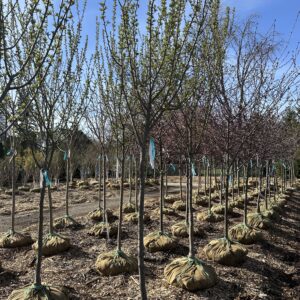
Planting: Choose a site with well-drained soil and full sunlight for your Adams Crabapple tree. Ensure the soil is fertile and moist but well-draining. Plant the tree with enough space for its mature size and root system to develop.
Watering: Keep the soil consistently moist, especially during the tree’s establishment period and dry spells. Water deeply and regularly, ensuring the root zone is thoroughly soaked. Avoid overwatering, as it can lead to root rot.
Mulching: Apply a layer of organic mulch around the base of the tree, extending out to the drip line. Mulch helps retain soil moisture, regulate temperature, and suppress weeds. Keep the mulch a few inches away from the trunk to prevent rot.
Fertilizing: Adams Crabapple trees generally don’t require heavy fertilization. Apply a balanced, slow-release fertilizer in spring to provide nutrients. Follow the manufacturer’s instructions for application rates.
Pruning: Prune your Adams Crabapple tree during the dormant season (late fall to early spring) to remove dead, damaged, or crossing branches. This promotes airflow and maintains the tree’s shape. Avoid heavy pruning, as it can impact flowering and fruiting.
Protection: Protect young trees from harsh weather conditions, strong winds, and extreme temperatures. Consider using tree wraps or shields to prevent sunscald during winter.
Pest and Disease Control: Monitor for common pests like aphids, scale insects, and caterpillars, as well as diseases like apple scab and powdery mildew. Treat infestations promptly with appropriate insecticides or fungicides.
Fruit Thinning: If your Adams Crabapple tree produces an abundance of fruit, consider thinning them in early summer to improve fruit size and prevent branch breakage.

Light: Alocasia ‘Frydek’ thrives in bright, indirect light. Avoid direct sunlight, which can scorch its leaves. Place it near a north or east-facing window where it receives filtered sunlight or provide artificial grow lights if natural light is insufficient.
Temperature: Maintain a warm and consistent temperature for your plant. Alocasia ‘Frydek’ prefers temperatures between 65°F to 80°F (18°C to 27°C). Avoid sudden temperature drops or drafts, as it’s sensitive to temperature fluctuations.
Humidity: This plant appreciates high humidity levels. To increase humidity, mist the plant regularly or use a humidity tray. Grouping it with other plants can also create a microclimate with higher humidity.
Watering: Keep the soil consistently moist during the growing season (spring and summer), but ensure it never sits in standing water. Water thoroughly and allow excess water to drain from the pot. Reduce watering in the dormant period (fall and winter) and let the top inch of soil dry out before watering again.
Soil: Use a well-draining potting mix with organic material, like peat moss, to retain moisture without becoming waterlogged. A mix designed for aroids or tropical plants is suitable.
Fertilization: Feed your Alocasia ‘Frydek’ every 4-6 weeks during the growing season with a balanced, water-soluble fertilizer diluted to half the recommended strength. Do not fertilize during the dormant period.
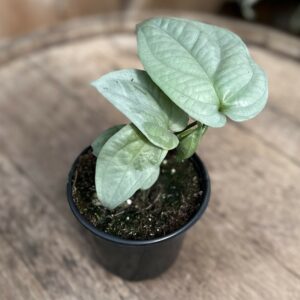
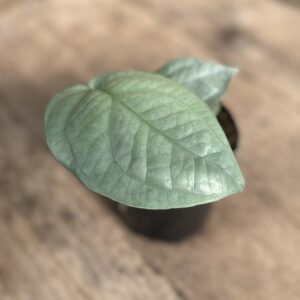
Light: Provide bright, indirect light for your Amydrium Medium Silver. It appreciates bright, filtered sunlight but should be protected from harsh direct sun exposure.
Temperature: Maintain a warm and consistent temperature between 65-80°F (18-27°C).
Humidity: Amydrium Medium Silver benefits from higher humidity levels.
Watering: Water the plant when the top inch of the soil feels dry to the touch. Water thoroughly, allowing excess water to drain from the pot.
Soil: Use a well-draining potting mix rich in organic matter. A mixture that includes peat moss, perlite, and orchid bark works well to provide good drainage.
Fertilization: Feed your Amydrium Medium Silver with a balanced liquid fertilizer every 4-6 weeks during the growing season (spring and summer).


This tall unglazed ceramic pot adds a sleek element to any home space. This pot pairs perfectly with most houseplants 3.5″ and under.
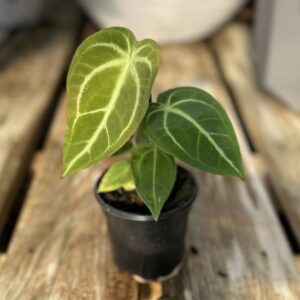
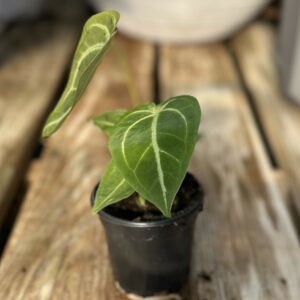
Light: Provide bright, indirect light for your Anthurium magnificum. It appreciates filtered sunlight or dappled shade. Avoid exposing it to direct sunlight, as this can scorch the leaves.
Watering: Keep the soil consistently moist but not waterlogged. Water when the top inch of the soil feels slightly dry. Anthuriums do not like to dry out completely, so maintaining a consistent level of moisture is essential.
Humidity: Anthurium magnificum thrives in high humidity. Regular misting or placing the plant on a tray filled with water and pebbles can help create a more humid environment. Grouping plants together can also increase humidity levels.
Soil: Plant your Anthurium magnificum in a well-draining, peat-based potting mix. A mix formulated for orchids or aroids works well. Ensure the pot has drainage holes to prevent waterlogging.
Temperature: Maintain a warm environment for your Anthurium magnificum. It prefers temperatures between 65°F to 80°F (18°C to 27°C). Protect it from drafts and sudden temperature fluctuations.
Fertilization: Feed your Anthurium magnificum with a balanced liquid fertilizer every 4-6 weeks during the growing season (spring and summer). Reduce or eliminate fertilization in the fall and winter when the plant is not actively growing.
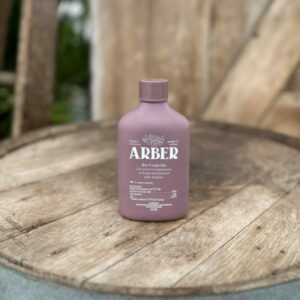
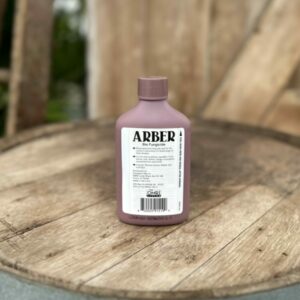
Arber Organics is a certified organic biological concentrate for indoor and outdoor use. Arber Bio Fungicide is a broad spectrum fungicide used for control and prevention of a broad range of foliar diseases.
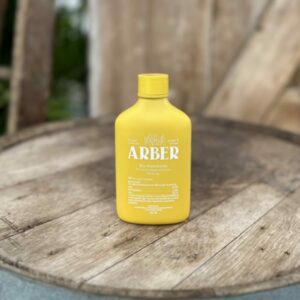

Arber Organics is a certified organic biological concentrate for indoor and outdoor use. Arber Bio Insecticide provides protection from Mites, Thrips, Aphids, and whitefly.
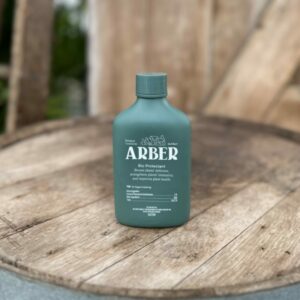
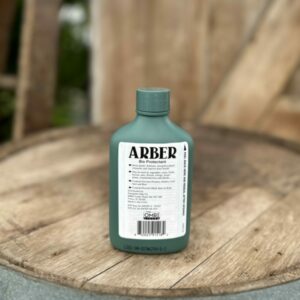
Arber Organics is a certified organic biological concentrate for indoor and outdoor use. Bio Protectant is used to strengthen plants immunity and overall plant health. This product controls and prevents powdery mildew, leaf spot, rust, and black spot.


Arber Organics is a certified organic biological concentrate for indoor and outdoor use. Aber Plant food is a well balanced nutritional supplement for indoor gardening and houseplants. This product increases availability to essential nutrients, strengthens root and shoot development, and supports soil fertility.
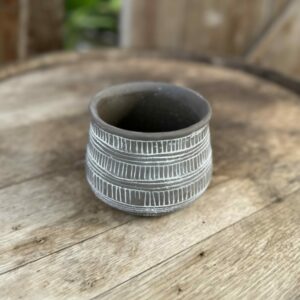
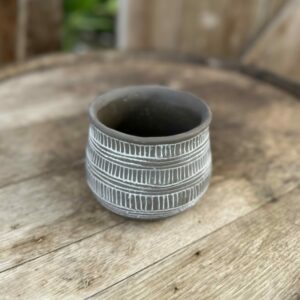
This simplistic design adds a dynamic element to indoor spaces. Contrasts well with all plants. Perfect for most houseplants 3.5″ and under.
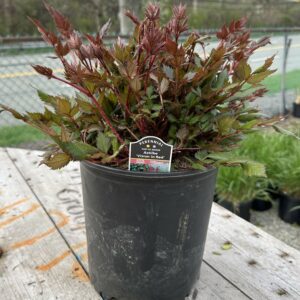
Planting: Choose a location with partial to full shade and moist, well-drained soil for your astilbe. Avoid areas with heavy clay soil or prolonged exposure to direct sunlight. Plant in early spring or fall, spacing plants 12 to 18 inches apart.
Watering: Keep the soil consistently moist, especially during hot and dry periods. Water deeply and regularly, providing enough moisture to keep the soil consistently damp but not waterlogged. Mulch around the base of the plant to retain moisture and regulate soil temperature.
Soil: Astilbes prefer rich, organic soil with a slightly acidic pH. Amend the soil with compost or peat moss before planting to improve fertility and drainage.
Fertilizing: Fertilize astilbes in early spring with a balanced, slow-release fertilizer or a fertilizer formulated for flowering perennials. Follow the manufacturer’s instructions for application rates and frequency.
Pruning: Deadhead spent flowers to encourage continuous blooming and remove faded foliage to maintain a tidy appearance. Cut back the entire plant to the ground in late fall or early spring to rejuvenate growth.
Division: Divide astilbe clumps every 3 to 4 years in early spring or fall to maintain vigor and prevent overcrowding. Dig up the plant and separate the root clumps, replanting the divisions in well-prepared soil.
Protection: Astilbes are generally resistant to pests and diseases, but monitor for common issues such as aphids, slugs, or powdery mildew. Treat promptly with insecticidal soap or fungicide if necessary.
Winter Care: Mulch around the base of the plant in late fall to provide insulation and protect the roots from freezing temperatures. Remove excess mulch in spring as new growth emerges.
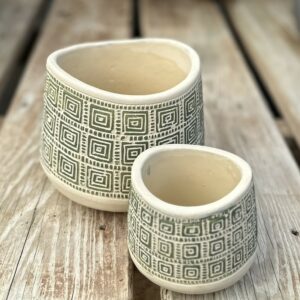
Introducing the Baba Petits Plant Pot – a charming accent piece that effortlessly integrates nature into your living spaces. With its thoughtfully crafted design, this petite plant pot adds a touch of elegance to your home decor, creating the perfect setting for your indoor garden.
The Baba Petits Plant Pot features a compact and versatile design, making it an ideal choice for any small space in your home. Whether placed on a windowsill, desktop, or shelf, its timeless aesthetics complement your interior style, bringing a sense of tranquility with the presence of greenery.